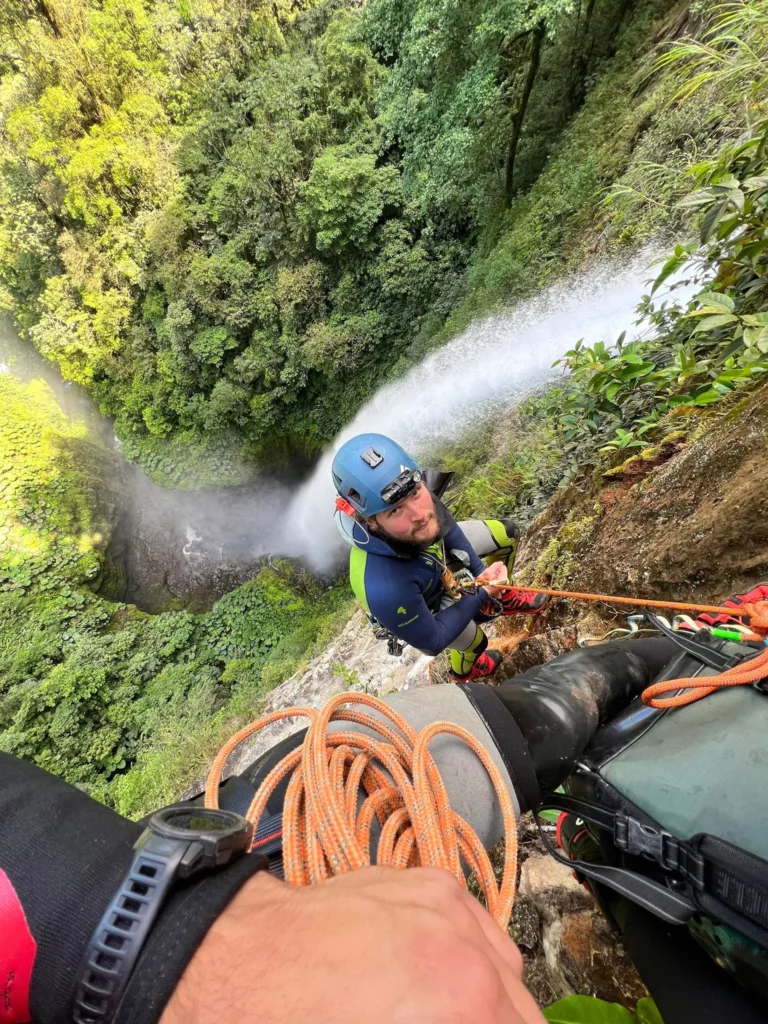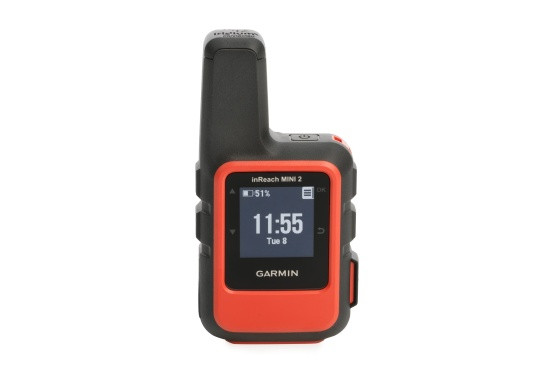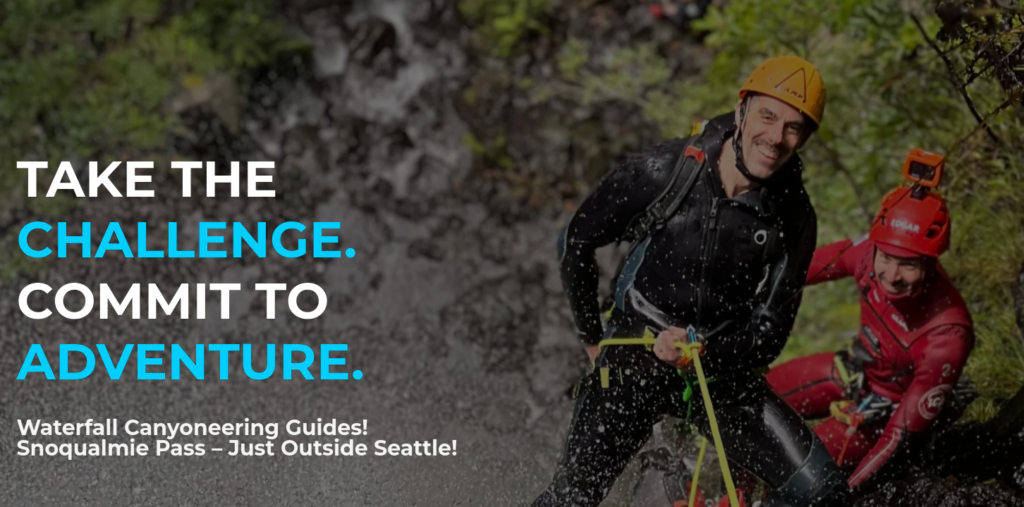What would You Do? Part 3: Plan Ahead And Prepare To Avoid Needing Rescue.
In our last series “What Would You Do (Part 1 and Part 2)?” We outlined a realistic scenario where a party is canyoning in a local canyon with just enough rope to run their canyon and they stick a rope after the tail of the rappel line is already 15 meters up the wall.
We presented the scenario in a way to make the option of ascending up the unsecured recovery line enticing. There was no safe way to resolve this scenario and continue down-canyon. That was the point of the exercise. Canyoning is a committing sport. Once you have committed yourself and your party to the canyon you only have the resources that you brought with you to continue down-canyon.
Thus, it is incredibly important that we plan ahead and prepare for emergency scenarios. Preparation ensures that when the unplanned happens it is a minor inconvenience or embarrassment, and not a dangerous emergency.

Part 1: Preparing for Success: Essential Measures Before Entering the Canyon.
Researching the Canyon:
Before embarking on a canyoning adventure, thorough research and preparation are key. The website ropewiki.com is an essential resource for learning about canyons in your area. By gathering information about the canyon you plan to explore, you can significantly improve your chances of a successful and safe experience.
Seek Local Insights:
Engage with local canyoning communities, either through online platforms or in person, to gather valuable firsthand information. Seek advice on anchor conditions, recent canyon conditions, and any specific considerations for the canyon you plan to visit. Establishing contacts within the local canyoning community can provide you with a support network and access to crucial information.
Weather Awareness:
Monitor weather forecasts for the region and the specific canyon you intend to explore. Ask in local facebook groups about ideal weather windows to run your canyon. Understand how weather conditions, such as rain, snow-melt, or flash floods, can impact canyon conditions and safety. Plan your trip accordingly and be prepared to adapt or postpone based on changing weather patterns.
Part 2: Equipping Your Team Adequately.
Proper equipment selection and preparation are paramount in ensuring your safety during canyoning. Focus on the following aspects:
Bring Enough Rope:
Research your canyon to know the minimum required amount of rope to bring. Both V7 Academy and the ACA recommend that you bring 3x the amount of rope that you need to descend your chosen canyon. This redundancy allows for contingencies such as rope retrieval in case of entanglement or unexpected obstacles. Having surplus rope will transform potential catastrophes into minor inconveniences.
Pro tip: A fiddle-stick attached to a thin line of 6mm paracord packs down very small and allows you to carry less weight. This is a great pull-cord for emergencies.
Bring an emergency kit:

Make sure that you are planning for the worst and hoping for the best. Bring enough equipment to survive overnight in the canyon every time that you go.
Part 3: Establishing a Reliable Safety Contact
Selecting a Safety Contact:
Choose a safety contact who is familiar with the area and reliable in their communication. Ideally, this person should have connections within the local canyoning community, allowing them to quickly mobilize resources and assistance if needed.
Reliability!
A Safety Contact who is canyoneering or adventuring is not a safety contact. Choose a safety contact who will be in service all day and will be able to reliably help you in an emergency. Your life may depend on them following through on their job.
Safety Plan:
Your Safety Plan needs to include the following: Where you are going, who you are going with, where you will park, a target time to contact them by, and who to contact/ what to do, in the event that you fail to make contact.
Communication Tools:
Wild Sky Adventure Guides strongly recommends carrying a satellite transponder, such as a Garmin inReach. The ability to communicate in an emergency can be the difference between life and death.

Essential Canyon Beta:
1.) Longest Rappel
Before you enter any canyon you absolutely must know the height of the longest rappel. This information influences the amount of rope that you bring with you.
2.) Types of anchors and their conditions.
You need to know what to expect. Often trip-reports on facebook or rope-wiki will mention the condition of the rappel anchors. Make sure to bring extra webbing and a fiddle stick in case the anchors need to be replaced.
3.) Emergency Exits
Canyoneering is a committing sport. Therefore you need to know about any possibilities of intermediate canyon exits before you begin your hike in. This is often included in the beta that you find on rope-wiki.
4.) Special Obstacles
Most people want to know about special difficulties like pothole escapes, challenging hydraulics, or difficult pulls. In our scenario a difficult rope recovery may have been marked in the beta. How will you know if you dont read it?
Don’t Read The Beta?
Some people don’t like to read all the beta, they enjoy the practice of problem solving. This is ok too, as long as they are prepared with the necessary skills and tools. Wild Sky Adventure Guides recommends that parties know rappel lengths as the minimum amount of beta before entering an explored canyon.
Conclusion:
By researching the canyon, bringing adequate equipment, and establishing a reliable safety contact, you can significantly enhance your probability for success and ability to respond effectively when faced with unexpected challenges during a canyoning adventure. Taking these precautionary measures will help you mitigate risks and ensure a safer and more enjoyable experience.
Safety: Wild Sky Adventure Guides strongly endorses professional instruction supplemented by a more experienced mentor.
In the PNW the most common training organizations are V7 Academy, the American Canyoneering Association, The Seattle Mountaineers, and The American Alpine Institute. Seek out instruction!
Be sure to visit the WA Canyon Coalition Safety Page for more information on best practices for your visit to the PNW.
Happy Canyons!


My friends and I are going to Zion this March, so we were thinking of trying out canyoneering while we are there since we all love extreme sports. It was a good piece of advice when you told us to research the canyon first before we embark on an adventure since this will help us prepare accordingly and improve our chances of a successful and safe experience. I’ll keep this in mind while I look for a canyoneering tour to book here in Zion soon.